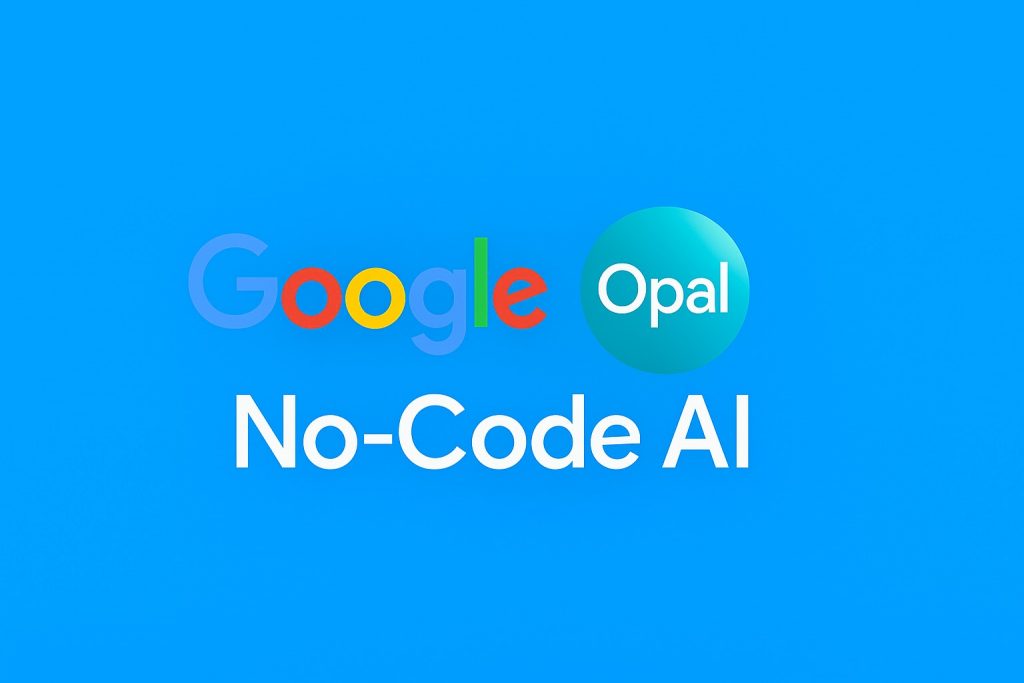Google’s Opal platform is heading to 15 new countries after the company discovered something unexpected: people don’t just want to build simple toys when you hand them powerful AI tools—they want to create genuinely useful applications.
The no-code AI app builder launched Monday across Canada, India, Japan, South Korea, Vietnam, Indonesia, Brazil, Singapore, Colombia, El Salvador, Costa Rica, Panama, Honduras, Argentina, and Pakistan. This marks a major international push for a tool that debuted in the United States through Google Labs just this past July, designed to let anyone build functional web applications using plain language instead of programming skills.

Users Surprised Google With Their Ambition
Megan Lee, Senior Product Manager at Google Labs, admitted the company misjudged what people would do with the platform. “When we opened Opal to users in the US, we expected them to build simple, fun tools,” she wrote in the announcement blog post. “We didn’t anticipate the surge of sophisticated, practical, and highly creative Opal apps we received instead.”
That gap between expectation and reality drove the decision to accelerate international availability. Early adopters weren’t content making basic utilities or novelty projects—they pushed the platform toward legitimate business tools and complex workflows that Google hadn’t initially designed for.
The platform’s mechanics are straightforward: describe what you want in regular language, and Opal translates that into visual workflows connecting AI models, prompts, and various tools. Users can then refine these workflows through a visual editor, clicking individual steps to adjust prompts or layer in additional capabilities. Finished applications get published online with shareable links, letting others test them using their Google accounts.
Technical Improvements Address Real Usage Patterns
Alongside the geographic expansion, Google shipped significant technical upgrades informed by how people actually used Opal in the wild. The company implemented advanced debugging capabilities that preserve the no-code approach—users can step through workflows visually in the editor or work iteratively with individual steps through a console panel. Errors now surface in real-time at the exact failure point, eliminating guesswork about what went wrong.
Performance improvements matter just as much as debugging tools. Google cut app creation time from over five seconds down to substantially faster launch speeds, though they didn’t specify exact numbers. More importantly, the platform now supports parallel execution for workflow steps, meaning complex multi-step applications can run processes simultaneously instead of sequentially, dramatically reducing total wait times.
These aren’t minor polish updates—they’re responses to friction points that only became apparent when users started building applications more ambitious than Google anticipated. The debugging improvements suggest people were hitting errors they couldn’t easily diagnose. The performance upgrades indicate workflows grew complex enough that sequential processing created noticeable delays.

Competing in the Democratized Development Space
This expansion positions Google against other platforms making software creation accessible to non-developers. Canva, Figma, and Replit all operate in adjacent territory, though with different approaches and target audiences. The broader industry trend involves AI making development tools usable by people without traditional programming backgrounds—what some have started calling “vibe-coding,” where natural language interfaces replace syntax and structure.
Opal represents Google’s entry into this emerging category, though the company brings advantages competitors lack. Deep integration with Google’s AI models, infrastructure to handle global scale from day one, and existing relationships with enterprise customers all work in Opal’s favor. Whether those advantages translate into market leadership depends on execution and whether the platform can maintain momentum as competitors refine their own offerings.
The international rollout hitting 15 countries simultaneously suggests confidence that the platform can handle diverse use cases across different markets and languages. Google didn’t specify whether Opal supports local languages beyond English in these new regions, though that would significantly impact adoption in non-English speaking markets like Japan, South Korea, and Vietnam.
What started as an experimental tool for creating simple applications has evolved into something more substantial based on how users actually behaved once given access. That pattern—users pushing tools beyond their intended scope—often signals genuine product-market fit rather than modest success meeting modest expectations. Whether Opal becomes a mainstream development platform or remains a specialized tool for specific use cases will depend on how Google responds to feedback from this much larger and more diverse user base.
The company positioned this as bringing Opal “to more creators worldwide,” framing the expansion around democratizing app development rather than competing directly with established no-code platforms. That positioning might shift as the platform matures and usage patterns become clearer across different markets and user segments.




Post a comment